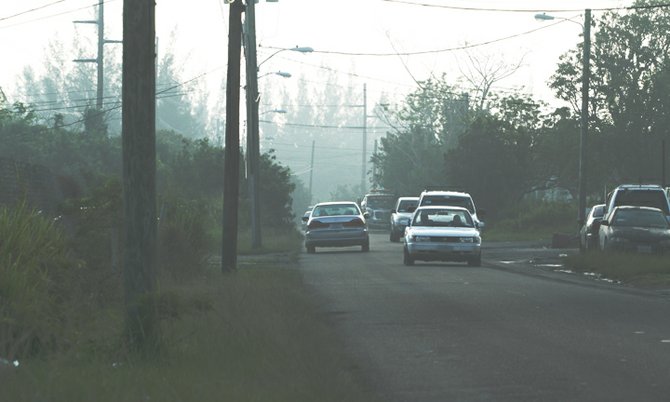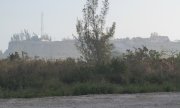By KHRISNA VIRGIL
Tribune Staff Reporter
kvirgil@tribunemedia.net
OFFICIALS are struggling to get a handle on a fire at the city dump that has been smouldering since Friday, Fire Chief Walter Evans said yesterday.
The challenge, Mr Evans told The Tribune was that the flames were being fuelled beneath the waste area’s
surface by a variety of highly flammable materials, including propane tanks, cardboard and cloth.
“Because of the depth of the fire,” he said, “heavy duty machines are needed to get below the surface, at least three to four or more feet.
“Had we been dealing with a surface fire, we would have already extinguished it and there would be no worries, but this thing is burning beneath.”
When asked if yesterday’s relatively heavy downpour of rain would assist with containing the fire, he said it was not likely. Personnel are also challenged in carrying out the task with fumes and smoke still lingering in the air, Mr Evans said.
“Caution and care must be used and there must be a regard for those from Environmental Health and Royal Bahamas Police Force in dealing with the matter.”
In light view of that, officials are now conducting air tests to ensure that no harmful chemicals are being released into the air, Melanie McKenzie, Environmental Health Director, said.
“The Ministry is doing some air quality monitoring as to what is actually burning so that there is no particular danger to citizens and (to find out) what they are breathing in,”she said.
Officials have also agreed that residents of neighbouring areas, including Victoria Gardens which is in the direct path of the smoke, do not have to relocate.
“There may not be anything toxic, but we know that smoke irritates us who have sinus issues so we want people to take precautions. We are also urging them to close their windows as much as possible.
“As it cools, there will be less and less smoke. We are trying to isolate the area. Soak it, turn it, soak it again, cover and then move to the next area. In a few days there will be no smoke whatsoever,” Ms McKenzie said.
Early last year, fire officials were faced with the same challenge at the dump and urged residents to seek medical assistance as soon as possible if they experienced breathing problems, headaches, vomiting, nausea or unusual fatigue.






Comments
carlh57 10 years ago
For our public officials and other to take a casual position on the danger of these fires is irresponsible, uneducated and blatant example of 'CYA' (aka cover your A**). Quit blaming others, take responsibility and get this issue resolved people! Educate yourself....we are not stupid...
In a report published by Waste Management World (leading waste company the the world), they emphatically state (and i am quoting directly from their report below):
"Atmospheric emissions from landfill fires are often dismissed as a nuisance. The following are two examples of just how serious the ‘nuisance’ is: Dioxin emissions: (remember the Bhopal disasterr?) The United Nations Environment Programme (UNEP) considers that for the foreseeable future, non-industrial, uncontrolled combustion, mainly comprised of landfill fires and illegal barrel burning, will remain the most significant source of persistant organic pollutants (POPs) in the form of polychlorinated dibenzo-p-dioxins (PCCDs) and polychlorinated dibenzofurans (PCCFs) in Europe (Thornton, 2002). Gases and Vapors: landfill fires emit a toxic cocktail of ‘Most Wanted’ fugitive gases including formaldehyde, hydrogen cyanide, hydrogen sulfide, nitrogen oxides and many others (OEPA, 2006). Visible smoke might not be visible since compacted waste acts as a good particulate filter, but fugitive gases are able to percolate towards the surface. Emitted smoke is a hazard and has resulted in the imposition of Civil Aviation Authority ‘no-fly’ zones. A particular problem with smoke, which is largely unburned carbon, is particles that have become activated, in the form of an adsorbent, with a huge appetite for mopping-up ‘most wanted’ contaminants. Very small particles, known as Sub PM2.5s (smaller than 2.5 millionths of a meter in diameter) are capable of remaining airborne for days, and together with adsorbed contaminants will pass directly into the bloodstream once inhaled."
Sign in to comment
Or login with:
OpenID